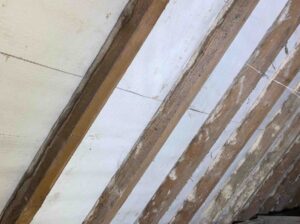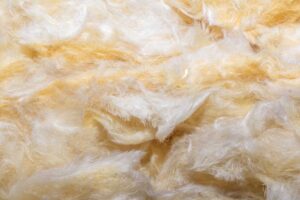Thermal bridging accounts for up to 30% of heat loss in a building. While selecting a widely available insulation product with excellent thermal performance is relatively straightforward, ensuring that the product functions effectively without thermal bridging presents a significant challenge.
Thermal bridging, also known as cold bridging, refers to the highest point of heat transfer within a building. The heat resistance in this section is much lower than its surroundings for multiple reasons, the most common being breaks in insulation. These breaks are often referred to as bridges and much like a bridge that allows you to cross water without getting wet, these thermal bridges allow heat to bypass insulation without being blocked. Which means, heat will pass much more easily into or out of the building.
Thermal bridges are common at junctions (wall-to-roof and wall-to-floor), corners, near openings (doors, windows, etc), and around pipe or cable holes. The complexity of construction, breaks in insulation around openings, and the limitation of some insulation materials are all common reasons for thermal bridging in these specific areas.
Types of Thermal Bridges
Repeating Thermal Bridges
As the term implies, repeating thermal bridges occur at consistent intervals across a given area. This form of thermal bridging typically arises when insulation is interrupted by timber or concrete studs, such as in a cavity wall, resulting in a break in insulation at each timber bridge.
Non-Repeating Thermal Bridges
Non-repeating thermal bridges allow heat to escape faster than any other type. They only occur in specific areas that are less insulated than the rest of the building, such as the corners of doors and windows. This type of thermal bridging is often hard to avoid and can cause up to 15% of the overall heat loss across an entire building.
Despite being hard to avoid, non-repeating thermal bridges can be minimised through efficient design and clever construction measures.
Random Thermal Bridges
In many cases, a random thermal bridge is caused by gaps or voids in the insulation layer or the presence of materials with high thermal conductivity. For instance, steel frames, metallic fasteners, and similar components penetrate the thermal insulation, creating zones of increased heat transfer.
How Can Thermal Bridging Affect Buildings?
Thermal bridging can be especially problematic during winter, when heat loss is more rapid due to colder outside temperatures and stronger winds. In winter, these thermal breaks are the weakest points in a building’s insulation, allowing heat to escape twice as fast. This causes the indoor temperature to drop, increasing the need for heating and leading to higher utility bills, even with insulation.
What’s worse, this temperature difference doesn’t just lead to increased heating costs. Prolonged temperature differences, with warm and moist indoor air coming into contact with cooler surfaces, are the perfect conditions for condensation — leading to issues with dampness within the property.
Damp patches and water damage in houses with little to no insulation are often the result of these ‘normal’ condensation issues. However, thermal bridging can also lead to a more concerning issue called ‘interstitial condensation,’ which could occur within any layer of a building structure, walls, roofs, or floors, for example.
Interstitial condensation occurs when warm, moist air penetrates into the building materials and attaches to a layer of material that is below the dew point. The thing that makes this kind of condensation so insidious is that it happens inside of the building, where you can’t see it.
As it is not clearly visible outside, it can cause long-term damage without immediate warning signs. Over time this trapped moisture can lead to serious issues; such as mould growth, and degradation of the building materials, potentially compromising the structural health of the building.
In essence, thermal bridging doesn’t just risk damaging the performance of the building’s insulation, but its structural safety too. The more thermal bridges or breaks you allow in your insulation, the greater these risks will be. And that is without even touching on the impact these issues could have on the wellbeing and comfort of the buildings’ inhabitants!
How to Recognise And Measure Thermal Bridging?
If a property is suffering from thermal bridging, the early warning signs to spot are the following;
1. Temperature variations or cold spots on walls, ceilings, or floors that feel noticeably cooler than the surrounding surfaces.
2. Condensation, moisture buildup, damp patches or even mould growth
3. Higher than expected energy bills due to increased heating or cooling
4. Sagging or otherwise deformed areas of the building, which could be a sign of structural decay
5. Paint or wallpaper peeling away from areas of walls that seem dry on the surface
6. Persistent musty smells with no obvious dampness.
To measure the heat loss thermal bridging causes, you can rely on U-values and PSi Values (Ψ–values).
U-values represent the rate of heat transfer through a building component and are essential for assessing the overall insulation performance of those components. Lower U-values indicate better overall thermal insulation. For repeating thermal bridges, such as across studs, frames etc, the impact on heat loss is specific and can be measured within the u-value calculation itself.
Psi values, on the other hand, measure the rate of heat loss through junctions connecting materials of varying thermal conductivity, such as wall-to-floor or roof-to-wall connections. By multiplying the Psi-value by the length of the junction and adding up the sum total can give you the total estimated heat loss from the area (y value). Much like U-values, a lower Psi-value equals less heat loss through the junction, and therefore better insulation performance.
How Can Space Wrap Insulation Prevent Thermal Bridges?
If the insulation doesn’t flow continuously, due to the complexity of the construction, or due to the limitation of some insulation materials, exposed areas will have much lower heat resistance than its surroundings. However, if you opt for an insulation that’s designed to provide a continuous barrier over the building’s exterior, the problem is halfway solved already.
Multifoil insulation is an excellent example of continuous insulation. It consists of multiple, self-contained layers of reflective foil alternated with layers of insulating wadding to block all forms of heat transfer effectively. When installed correctly, multifoil insulation creates an even and unbroken thermal barrier, covering all potential gaps and cracks where thermal bridging could occur, such as at junctions and around structural elements.
Multifoil insulation is also great at keeping building elements — such as rafters, purlins, etc — protected inside the foil envelope from external weather, corrosion and other hazards.
Minimise Moisture Build Up And Condensation
Insulation that absorbs moisture and diminishes in performance over time is undoubtedly unsuitable. Effective vapor control and breathable membrane insulation products are essential to prevent moisture from infiltrating the building’s structural systems, thereby avoiding condensation and safeguarding against structural degradation and other moisture-related issues. Multifoil insulation with an integrated vapor barrier layer effectively minimizes air leakage and prevents cold air from bypassing the insulation.







